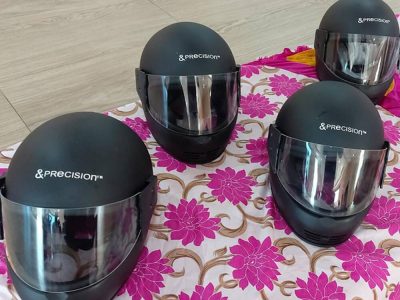
Modular Switch Plates Add Elegance To Your Home Décor
June 12, 2021
6 Warning Signs Your Electrical Switches Need An Upgrade
August 30, 20217 Do’s and 7 Don’ts for an Electrically Safe Monsoon
The monsoons bring in an attitude of welcome transition in the country. Working afternoons turn comfortable as the heat dwindles, local water reservoirs are filled to the brim, and the petrichor evokes strong feelings of hope and nostalgia in the denizens, as they sip hot beverages and look outside their rain-streaked windows. For most people, it is a positive transition. But underlying all the niceties is the possibility of water infiltration into building interiors. And that is why electrical circuits are in greatest danger during this season. So, we present 7 Do’s and Don’ts to ensure your house, building, and vicinity are electrically safe during the wet season:1. Do’s
- Install Anti-Storm Technology: Discuss with your building committee the necessity of purchasing and installing lightning arrestors, conductors, whole house surge protectors, and other earthing apparatus to withstand lightning strikes and short circuits in the stormy weather.
- High Sensitivity RCCBs Can Save Lives: Have your building’s ELCBs replaced by Residual Current Circuit Breakers (RCCBs) to prevent electrocution via wet electrical outlets. RCCBs are superior to ELCBs at cutting off electrical supply that is accidentally transmitted through an unsuspecting human.
- Grouting, Sealing, and Waterproofing Walls and Floors: The primary means water affects your internal electrical circuitry by seeping through cracks and fissures in the exterior and interior walls. This can be remedied from the exterior through a waterproofing coat. For cracks and gaps in the wall, pack cement and sand; fix the bituminous damp proof course in the exterior wall in case groundwater seeps upwards. For the floor, grouting does the job.
- Discuss Surge Suppressors with Your Electrician: There are several technological additions your electrician might be able to install for your building’s circuits, such as surge suppressors i.e. metal oxide varistors, gas tube discharge tubes, and transient voltage suppressors. Discuss them before choosing an option that fits your spaces best.
- Purchase Modular Switches and Outlets that Have No Openings: There is always the risk of electrocution during a storm (lightning strikes on supply wires) or due to rainwater seepage in the wall. Gaps in the switch plates can electrocute children and other inhabitants. Modular electrical switches avoid the use of visible screws, have shuttered sockets, have undergone stringent quality checks, and their openings are at a minimum, which makes them ideal for use during rains.
- Trim Trees Near Overhead Power Lines: Approach local officials or a zoning committee’s authorities regarding the trimming of nearby wind-battered trees, as their branches near power lines. There is always a danger of these trees redirecting large amounts of electricity into the earth and rainwater, making it a potentially fatal hazard.
- Check for Compromised Electrical Components: Replace electrical components if you spot any discrepancies around your living space i.e. any damp patches, cracks, and gaps near the switch plates could indicate damaged and compromised wires, which is a no-no. A frequently-tripping miniature circuit breaker could indicate that your circuits are faulty due to dampness.
2. Don’ts
- Installing Outlets Near Windows & Semi-Open Areas: To avoid short circuits, it is preferable not to install electrical conduits and outlets under a window or in a semi-open area like a balcony. For the balcony, use extension cords to power your needs.
- Using Appliances During Storms: In case your building does not have adequate surge protection from overcurrent and lightning strikes, do not use your appliances, for fear of them burning out with a lightning-caused surge. When weather forecasts tell of a coming storm, it is advisable to go through your house checking each electrical outlet for a connected appliance. Ensure your appliances are all turned off and their cords disconnected from the main supply.
- Touching Wet Wall Patches Near Electrical Fixtures: Sometimes, as water seeps into your walls, it comes in contact with the electrical conduits, some of which may not be properly insulated with PVC. That’s why it is imperative you refrain from drying it with direct contact; use insulated gloves or call a professional electrician.
- Repairing Electrical Components by Yourself: Whenever you find any discrepancy in your electrical outlets, conduits, and panels, do not dabble in maintenance, as your ignorance could cause further damage or, worse, electrocution. Contact a licensed electrician to restore the system back to working order.
- Standing Near a Water-Logged Pillar Box or Meter Room: Often, water can collect around your building’s pillar box or meter room. Inform authorities and technical experts on how to solve the problem. Do not attempt to fix the problem yourself.
- Using a Metal-Framed Mop to Clear Water Near Electrical Equipment: You do not want the mop to conduct dangerous current into your body through the water. To stay on the safe side, first switch off the mains immediately and then clear the place using a mop of non-conductive material.
- Using a Charging Hand-held Device During a Storm: It goes without saying that, while a storm is brewing outside the house, using a smartphone or other hand-held device is unwise. There is always a possibility that a lightning strike on the electrical supply lines will direct a fatal amount of current into your hands, killing you instantly.



































































